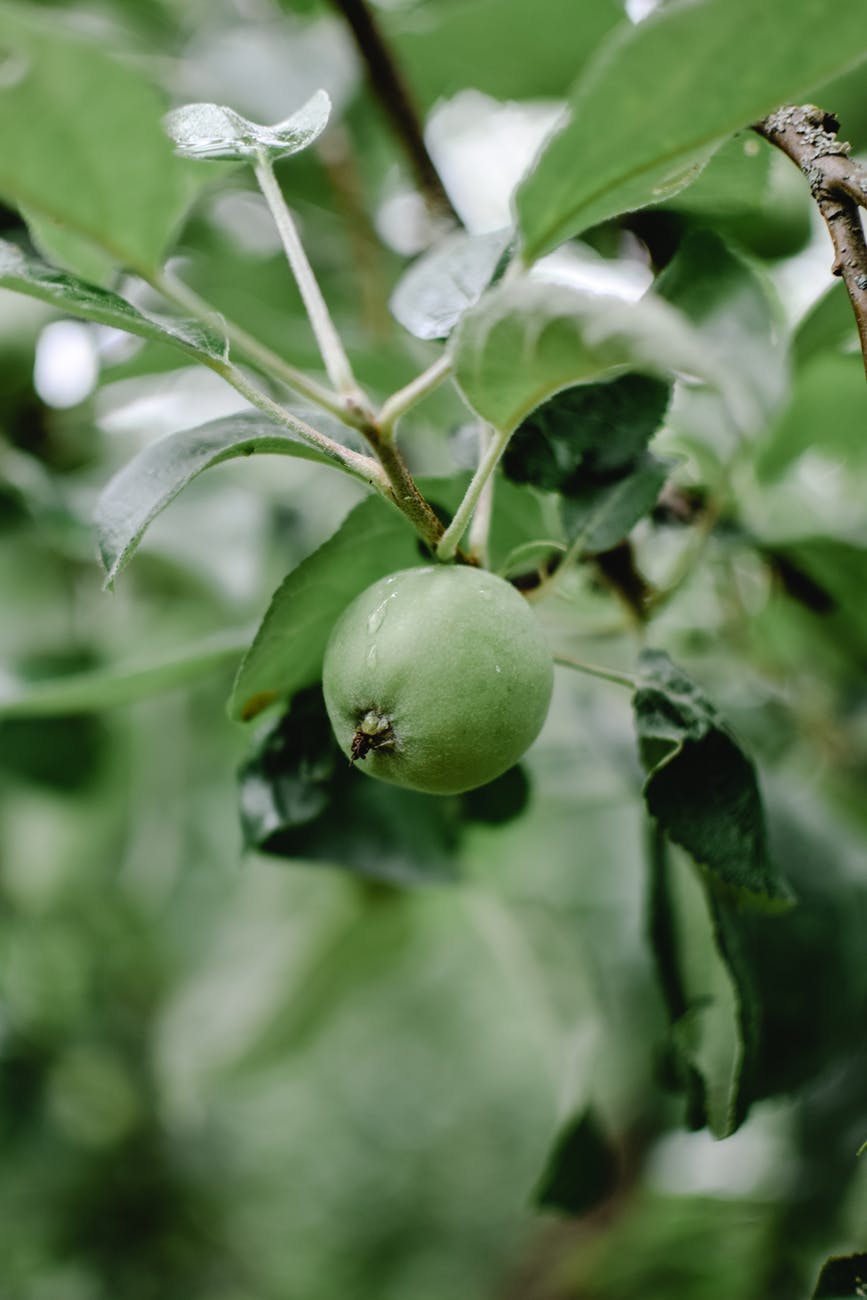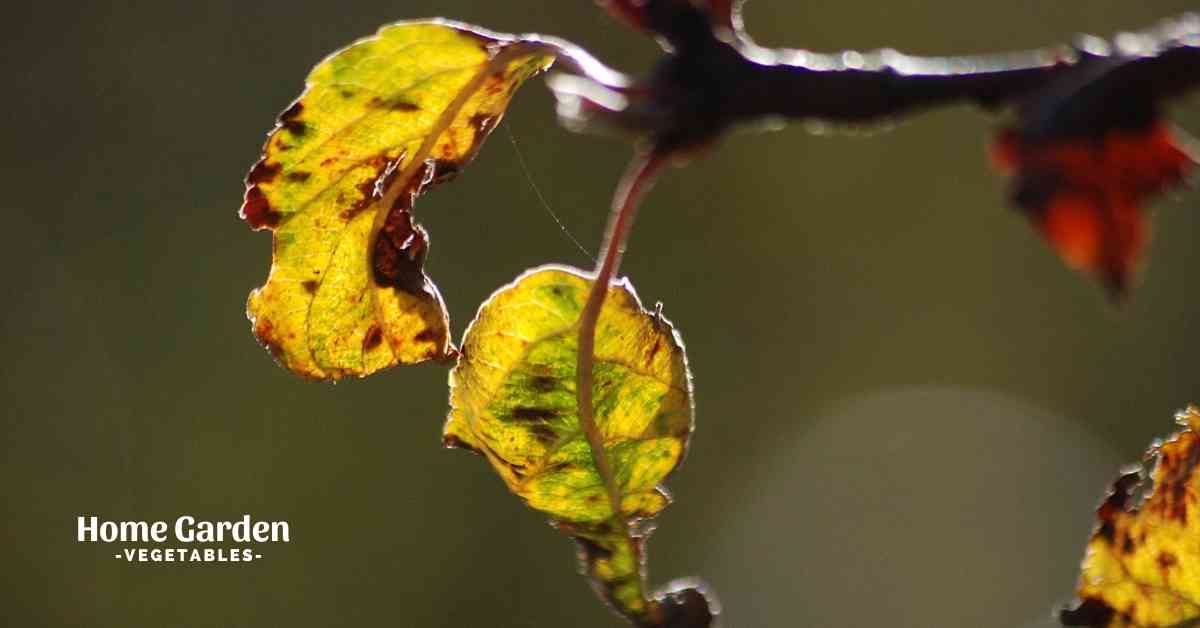Apple tree brings bundles of colors to your landscape. Apple trees have a lot to offer. Not only do you get delicious fruit but also a beautiful tree. From white and pink blossoms in spring. Followed by bright fruits in summer. At the end of the season is a beautiful golden canopy in the fall. Read on to find out more on apple tree leaves curling and turning yellow.
However, if the leaves start changing color and curling, and it’s not autumn, consider it a sign that something isn’t right.
Reader Poll: What online courses would interest you?

Apple Tree Leaves Curling and Turning Yellow
Apple tree is a beautiful addition to the garden, but it takes some maintenance. There are a number of diseases and pests that the tree is prone to. Apple tree leaves curling and turning yellow can easily be linked to many of these problems. Here are some problems and solutions associated with curling and yellowing of leaves. If you need more help please use the contact page and I will get back to you as soon as I can.
Identification
When the leaves of an apple tree start to curl and turn yellow, it can be a sign of two things: too much nitrogen in the soil or an apple tree fungus. Either way, if the leaves are yellow, your tree is not doing well.
Fungal Problems
1. Apple Scab
This is a fungal disease that often hits the tree after rainy weather. The first signs of the disease include yellow or dark blotches on the leaves. As the disease progresses, the leaves curl, turn yellow and eventually fall off. Leaf loss weakens the tree and will affect the yield over a course of years. The disease also progresses to the fruit, often rendering it unfit for eating.
Subscribe to our newsletter!
Fungicidal sprays can help restore the trees health and control the infection from spreading. In the fall, remove fallen leaves from your yard and destroy them to prevent the spreading of fungal spores. To resolve prune out the excess branches. This will lower the thickness of the canopy allowing air to circulate. This will help prevent further fungal infections.
2. Sooty Mold
Sooty mold is a fungal infection that develops on the secretions of pests that feed on the tree, including aphids. It won’t cause much damage to the tree until the mold grows thick enough to cover the leaves and prevent light from reaching it. Once the leaves are deprived of light for photosynthesis, they will turn yellow, shrivel and fall off eventually.
Controlling this fungal infection starts by controlling the insect that’s producing the secretions on the tree. Horticultural oils and insecticidal soaps are often helpful against aphids. Furthermore, the mold itself can manually be cleaned off the leaves using soapy water. This approach may work if the infection is limited to a small portion of the tree.
Bacterial Problems
3. Fire Blight
Fire blight is a destructive disease that infects the apple tree and is caused by the bacterium Erwinia amylovora. The apple tree leaves will appear scorched, dried and curled as a result.
Prune out cankers in the dormancy season to reduce sites for the bacteria to overwinter. Avoid overfertilizing the tree and keep the foliage dry while watering to keep the damage from the disease minimum.
Control pests since they can spread fire blight faster towards the healthy parts of the plant. Despite all the techniques to control its spread, there is no treatment to cure it once the infection has occurred.
Pest Problems
If your apple tree leaves are curling and turning yellow, keep an eye out for the following pests:
4. Aphids
Two kinds of aphids generally cause the apple tree leaves to curl and turn yellow. Watch out for green aphids and rosy apple aphids if your tree is experiencing these symptoms. Aphids are pests that suck out the plant juices from the tender shoots and leaves, causing the leaves to curl inwards. The pests hide under the shade of the curled leaves, protecting themselves from predators and pesticides.
If the infestation only affects a few branches, prune and discard them. Aphids can also be hosed off with a strong spray of water from the hose. Repeat this technique several times through the season until the pests are gone for good. Spray pesticides only when necessary, since the aphids have some natural predators in the garden.
5. Leaf Curling Midge
Leaf curling midge is a small, dark fly that causes curling of the leaves in apple trees. The female lays eggs on the leaves around springtime. Midge eggs hatch into larvae that feed on the leaves, causing the leaves to curl. Infested apple tree leaves turn yellow and fall off eventually. Terminal shoots can be stunted as a result of the damage but, yield is rarely affected. Management of the problem involved pruning out and throwing away the infested branches.
Other Problems
There are times when yellowing leaves may not be caused by disease or pests.
6. Improper Watering
Both overwatering and under watering can cause the apple tree leaves to turn yellow and shrivel. To improve irrigation, allow the soil to dry out 2 to 4 inches before watering the tree deeply and slowly. If you’re watering correctly already, the problem could be in the soil. Poorly draining soil, such as clay soil and freely draining soil, such as sandy soil can both be a problem. The soil should be a suitable blend of the two for proper drainage. Amend the topsoil with compost and mulch around the plants to improve drainage.
7. Nutrient Deficiencies
A lack of nutrients can also cause the leaves to curl, yellow, brown and fall off eventually. To restore soil nutrients, add compost once or twice a month or use a balanced NPK fertilizer. 5-5-5 and 10-10-10 are both ideal blends for feeding apple trees.
Conclusion
A variety of problems could be causing apple tree leaves curling and turning yellow. It’s important to investigate the problem further and figure out exactly what’s the underlying cause before you can address it.

